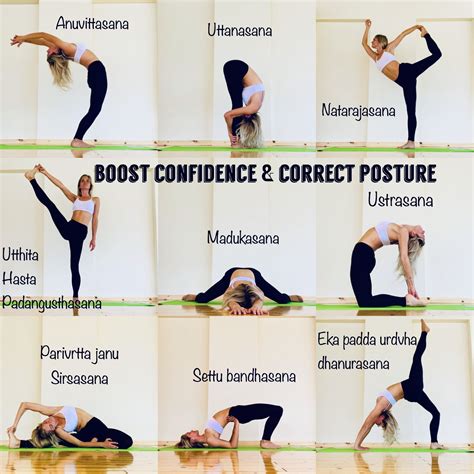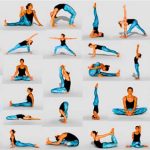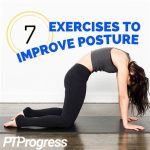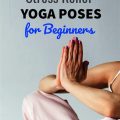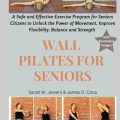Unlocking the Benefits of Yoga: Essential Poses for Enhanced Posture
In our fast-paced modern world, where sedentary lifestyles and excessive screen time dominate, maintaining good posture has become increasingly challenging. Poor posture not only affects our physical appearance but can also lead to a range of health issues, including back pain, decreased lung capacity, and tension headaches. Fortunately, yoga offers a holistic approach to posture correction through a series of essential poses that strengthen, stretch, and align the body. This article explores these poses, supported by expert opinions, evidence-based discussions, and practical insights.
Understanding Posture
Posture refers to the position of the body in space, encompassing how we hold ourselves while sitting, standing, and moving. Good posture aligns the spine, distributes body weight evenly, and supports overall physical health. Conversely, poor posture can result from muscle imbalances, joint dysfunction, and lifestyle choices. Understanding these factors is crucial for effectively addressing posture-related issues.
Types of Posture
- Static Posture: The body’s alignment when stationary, such as sitting or standing.
- Dynamic Posture: How we move, including walking, running, and exercising.
- Muscle Engagement: The involvement of specific muscle groups in maintaining posture.
The Impact of Poor Posture
Research has shown that poor posture can lead to various physical and psychological consequences:
| Consequence | Description | Proposed Solution |
|---|---|---|
| Back Pain | Increased strain on spinal muscles and ligaments. | Incorporate strengthening and stretching yoga poses. |
| Reduced Lung Capacity | Constricted rib cage and limited diaphragm movement. | Practice deep breathing techniques in yoga. |
| Tension Headaches | Muscle tension and stress related to poor posture. | Utilize restorative poses and relaxation methods. |
Essential Yoga Poses for Better Posture
The following poses are integral to improving posture by targeting specific muscle groups and promoting overall body alignment:
1. Mountain Pose (Tadasana)
This foundational pose teaches proper alignment and balance.
- Benefits: Strengthens legs, improves posture awareness.
- How to Practice: Stand tall, feet together, engage thighs, and lift the chest.
2. Downward-Facing Dog (Adho Mukha Svanasana)
A full-body stretch that elongates the spine and shoulders.
- Benefits: Stretches hamstrings, calves, and spine.
- How to Practice: Start on hands and knees, lift hips, and straighten legs.
3. Cobra Pose (Bhujangasana)
This pose strengthens the back muscles and opens the chest.
- Benefits: Alleviates back pain, improves spinal flexibility.
- How to Practice: Lie face down, place hands under shoulders, and lift the chest.
4. Cat-Cow Stretch (Marjaryasana-Bitilasana)
A dynamic sequence that promotes spinal flexibility.
- Benefits: Enhances spine mobility, relieves tension.
- How to Practice: Alternate between arching and rounding the back on hands and knees.
5. Bridge Pose (Setu Bandhasana)
This pose strengthens the back and opens the chest and hips.
- Benefits: Strengthens glutes, improves spinal alignment.
- How to Practice: Lie on your back, bend knees, and lift the hips while pressing into the feet.
6. Seated Forward Bend (Paschimottanasana)
A calming pose that stretches the spine and hamstrings.
- Benefits: Lengthens the spine, calms the nervous system.
- How to Practice: Sit with legs extended, hinge at the hips, and reach for the feet.
7. Child’s Pose (Balasana)
A restorative pose that relaxes the body and mind.
- Benefits: Relieves stress, stretches the back.
- How to Practice: Kneel and sit back on the heels, extending arms forward or resting by the sides.
8. Warrior II (Virabhadrasana II)
This pose builds strength and stability in the legs and core.
- Benefits: Increases focus, improves posture.
- How to Practice: Stand with legs wide, bend front knee, and extend arms parallel to the floor.
9. Triangle Pose (Trikonasana)
A standing pose that promotes flexibility and balance.
- Benefits: Stretches the spine and hamstrings, opens the chest.
- How to Practice: Stand with legs wide, reach forward, and tilt the torso towards the extended arm.
10. Pigeon Pose (Eka Pada Rajakapotasana)
This pose opens the hips and stretches the glutes.
- Benefits: Releases tension, improves hip mobility.
- How to Practice: Bring one knee forward, extending the other leg behind while keeping the hips square.
11. Chest Opener Stretch
A simple stretch to counteract rounded shoulders.
- Benefits: Increases shoulder mobility, expands the chest.
- How to Practice: Stand or sit, interlace fingers behind the back, and gently lift.
12. Spinal Twist (Supta Matsyendrasana)
This pose enhances spinal flexibility and promotes detoxification.
- Benefits: Releases tension in the spine and back muscles.
- How to Practice: Lie on your back, bring one knee across the body, and extend the opposite arm.
13. Eagle Pose (Garudasana)
A balancing pose that improves concentration and focus.
- Benefits: Strengthens legs, stretches shoulders.
- How to Practice: Stand on one leg, wrap the other leg around it, and cross the arms.
14. Savasana (Corpse Pose)
This restorative pose promotes deep relaxation and body awareness.
- Benefits: Reduces stress, integrates the benefits of the practice.
- How to Practice: Lie flat on your back, arms at the sides, and focus on breathing.
Counterintuitive Findings in Yoga and Posture
While many assume that stretching alone will solve posture issues, evidence suggests that strength training is equally crucial. For instance:
- Finding: Strengthening core muscles enhances postural stability.
- Counterintuitive Insight: Overstretching can lead to instability; balance is key.
Common Misconceptions About Yoga and Posture
Many people believe yoga is only for flexibility, but it also builds strength, balance, and awareness. Addressing these misconceptions is vital:
| Misconception | Reality | Clarification |
|---|---|---|
| Yoga is only for flexible people. | Yoga is accessible to all body types. | Variations exist for every pose. |
| You need to be in shape to practice yoga. | Yoga can improve fitness levels. | Beginners can start with gentle classes. |
| Yoga is a workout, not a healing practice. | Yoga promotes physical and mental health. | It fosters self-awareness and stress relief. |
Limitations and Future Research
Despite the numerous benefits of yoga for posture improvement, it is essential to acknowledge certain limitations:
- Lack of Standardization: Variability in yoga styles and practices can affect outcomes.
- Individual Differences: Personal factors such as age, health, and experience can influence results.
- Limited Research: More rigorous studies are needed to establish definitive links between specific poses and posture improvement.
Future research should focus on:
- Longitudinal studies tracking posture changes over time with regular yoga practice.
- Comparative studies assessing the effectiveness of various yoga styles on posture correction.
- Exploration of technology-assisted yoga practices and their impacts on posture.
Summary
Improving posture through yoga is a multifaceted approach that incorporates strength, flexibility, and mindfulness. By integrating essential yoga poses into daily routines, individuals can foster better alignment, enhance overall health, and cultivate a deeper connection to their bodies. As research continues to evolve, the benefits of yoga for posture and well-being are likely to become increasingly recognized and valued.
